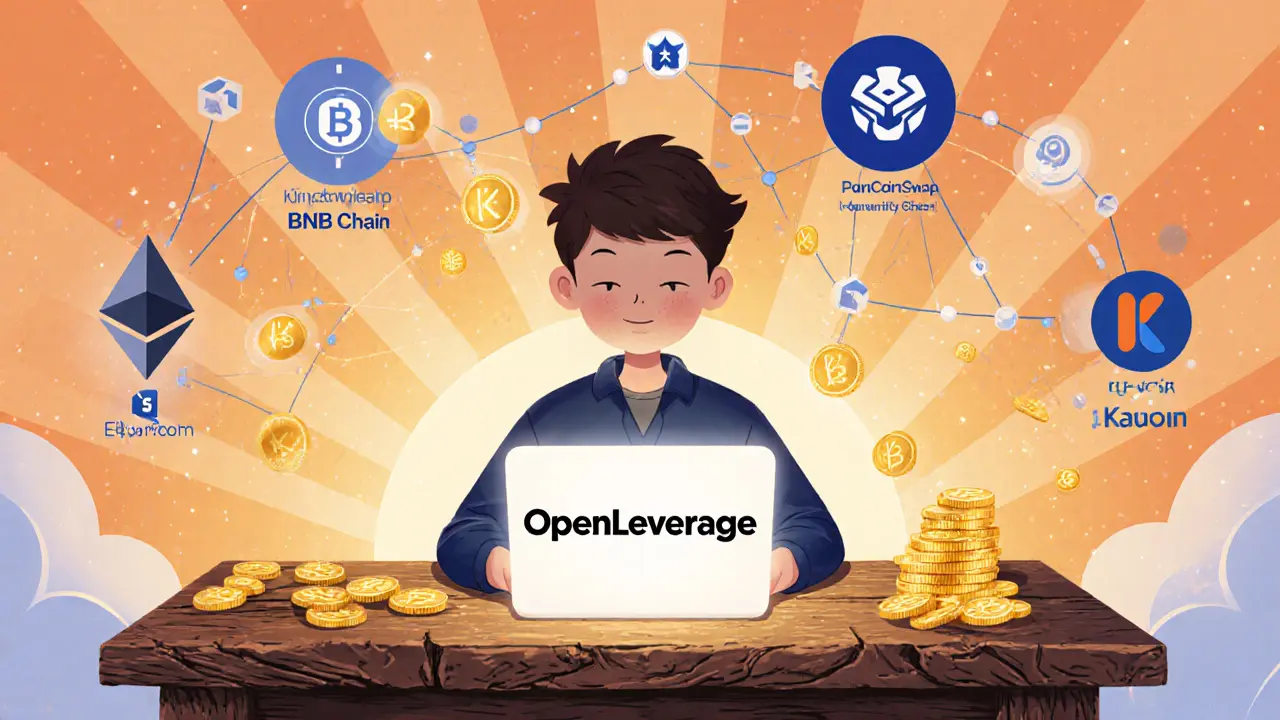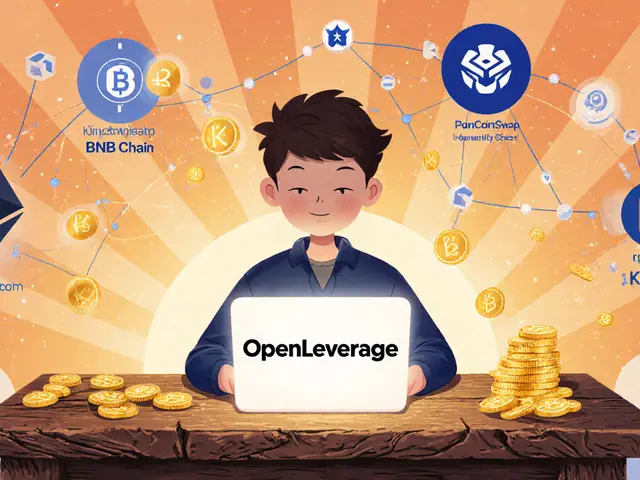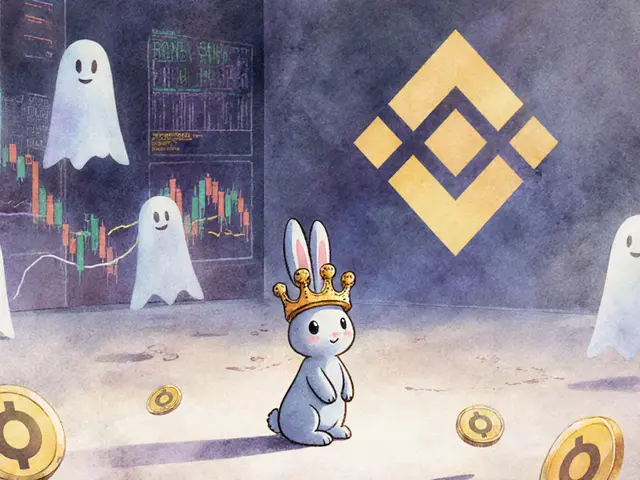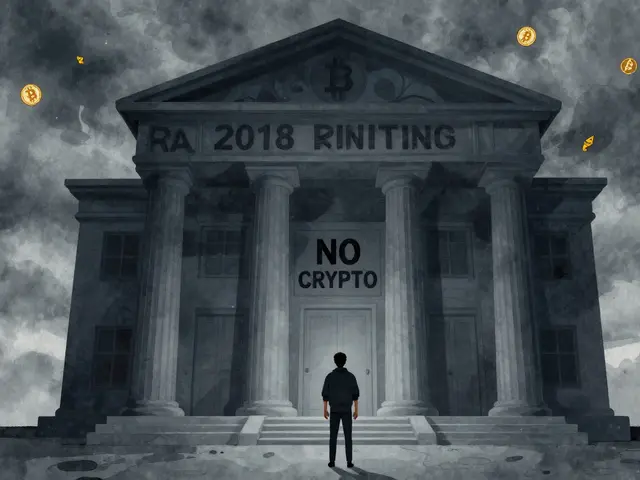OpenLeverage Margin Calculator
Margin Trading Simulator
Calculate potential outcomes for your OpenLeverage trades with up to 10x leverage. The platform liquidates positions when collateral drops by 12.5%.
Trade Results
Current Position Value: $3,000.00
Current Collateral: $1,000.00
Estimated Liquidation Price: $925.00
Potential Profit/Loss: +$500.00
Liquidation Risk: Low Risk
Required Buffer: $125.00
Ever wondered why some DeFi platforms let you go long or short any token pair without a central gatekeeper? OpenLeverage tries to solve exactly that - offering permissionless margin trading across multiple DEXs while using its own OLE token for utility and governance. This guide walks you through what OpenLeverage is, how the OLE coin fits into the ecosystem, the tech behind it, market stats, competitor positioning, risks, and the steps you need to start trading.
What is OpenLeverage?
OpenLeverage is a permissionless margin trading protocol that enables traders to long or short any pair on decentralized exchanges (DEXs). It does so by creating isolated lending pools and allowing cross‑DEX execution, which means you don’t need a single liquidity pool or a centralized approval process.
How the OLE Token Powers the Platform
The OLE token serves two main purposes:
- Utility: Holding OLE reduces trading fees and boosts lending rewards for participants who supply liquidity to the isolated pools.
- Governance: Locked OLE grants voting rights on protocol upgrades, fee structures, and new market creations. The governance model mirrors other DeFi projects where token‑weighted votes decide the roadmap.
Because OLE is both a utility and governance token, its value is tied to platform activity - more margin traders usually translate to higher demand for OLE.
Technical Architecture: Isolated Pools & Cross‑DEX Trading
OpenLeverage runs on three major blockchains - Ethereum, BNB Chain, and KuCoin Community Chain - expanding access to a wider range of DEXs such as Uniswap, PancakeSwap, and KuCoin’s DEX. The core technical features include:
- Isolated lending pools: Each pool is independent, holding a single‑sided token. This design limits exposure to flash‑loan attacks and protects lenders from other traders’ liquidation events.
- Cross‑DEX order routing: When you open a position, the protocol scans multiple DEXs for the best price, then splits the trade across them if needed. This reduces slippage for low‑liquidity pairs.
- Permissionless market creation: Anyone can propose a new margin market for any token pair, subject to a governance vote. No central entity decides which pairs are tradable.
The combination of isolated pools and cross‑DEX routing makes OpenLeverage unique among DeFi margin platforms, which often rely on a single liquidity source.
Tokenomics & Market Data (as of Oct 2025)
Key numbers give a snapshot of OLE’s current state:
- Circulating supply: 478,817,577 OLE tokens.
- Current price: $0.00256 USD (CoinMarketCap, Oct 2023).
- Market cap: $3.47 million, with a fully‑diluted market cap of $5.84 million.
- 24‑hour volume: $23,165, indicating modest trading activity compared with larger DeFi protocols.
Despite a relatively low market cap, the token’s utility in fee discounts and governance keeps a core community of retail holders - about 83 % own fewer than 10,000 OLE, suggesting limited institutional interest.
OpenLeverage vs. Competitors
Below is a quick side‑by‑side look at how OpenLeverage stacks up against three well‑known margin platforms.
| Feature | OpenLeverage (OLE) | GMX | Kwenta | Synthetix |
|---|---|---|---|---|
| Multi‑chain support | Ethereum, BNB Chain, KuCoin Community Chain (planned Polygon & Optimism) | Arbitrum, Avalanche | Arbitrum, Optimism | Ethereum |
| Lending pool design | Isolated, single‑sided pools | Shared liquidity pool | Shared pool | Shared pool |
| Cross‑DEX execution | Yes (multiple DEXs per trade) | No (single DEX per trade) | No | No |
| 24‑h volume (USD) | ~$23 k | ~$5 M | ~$1 M | ~$2 M |
| Governance token | OLE - fee discounts & voting | GMX - limited voting | KWENTA - utility & staking | SYN - staking & escrow |
OpenLeverage shines in niche scenarios where a trader needs a specific low‑liquidity pair across several DEXs. However, its modest volume and limited liquidity depth mean it may lag behind GMX or Synthetix for high‑frequency, large‑scale trades.
Risks & Community Feedback
Every DeFi protocol carries risk, and OpenLeverage is no exception. The most cited concerns include:
- Liquidity risk: Isolated pools can dry up quickly, leading to higher slippage during volatile periods.
- Liquidation thresholds: The protocol triggers liquidation at a 12.5 % collateral drop, which historically caused over 200 margin calls during Bitcoin’s 20 % swing in June 2023.
- Interface challenges: Users on the r/DeFi subreddit mentioned delayed liquidation warnings and a steep learning curve for newcomers.
On the upside, the community appreciates the transparent governance process. In August 2023, OLE holders voted to cut trading fees by 15 %, demonstrating real influence over protocol economics.
Getting Started - A Simple Walkthrough
If you want to try OpenLeverage, follow these steps. The official onboarding guide lists 17 steps, but most experienced DeFi users complete the core flow in about half an hour.
- Set up a wallet that supports Ethereum, BNB Chain, or KuCoin Community Chain (e.g., MetaMask, Trust Wallet).
- Acquire OLE tokens on a supported DEX - Uniswap for Ethereum, PancakeSwap for BNB Chain, or KuCoin DEX for KCC.
- Navigate to the OpenLeverage web app and connect your wallet.
- Deposit the desired collateral (any supported token) into an isolated lending pool.
- Choose a trading pair, set leverage (up to 10× on most chains), and confirm the order.
- Monitor the position via the dashboard; set price alerts to avoid unexpected liquidations.
- If you hold OLE, lock it in the governance vault to earn reduced fees and voting power.
Remember to keep a buffer of collateral larger than the minimum requirement - a 20 % safety margin is a common practice among seasoned traders.

Roadmap & Future Outlook
OpenLeverage announced a v2.0 upgrade for Q4 2023 (now live) that introduces:
- Dynamic interest‑rate algorithms that adjust borrowing costs based on pool utilisation.
- Support for Polygon and Optimism, expanding the already‑broad multi‑chain footprint.
- Optimised liquidation processing - 40 % faster and 65 % cheaper gas fees.
Analysts remain split. IntoTheBlock gave the protocol a 67 % chance of surviving past 2025, citing active developer commits. Conversely, Bernstein warned that without deeper liquidity the platform may struggle to capture more market share. The consensus is clear: technical innovation is there, but scaling liquidity will be the make‑or‑break factor.
Quick Takeaways
- OpenLeverage is a permissionless DeFi margin protocol that works across Ethereum, BNB Chain, and KuCoin Community Chain.
- OLE token provides fee discounts, lending rewards, and governance voting rights.
- Isolated lending pools and cross‑DEX routing reduce flash‑loan risk but create liquidity challenges.
- Current market cap is under $4 million with modest trading volume, positioning OLE as a high‑risk, high‑potential asset.
- Future upgrades aim to improve rates and expand to Polygon and Optimism, but liquidity depth remains the biggest hurdle.
What chains does OpenLeverage support?
OpenLeverage runs on Ethereum, BNB Chain, and KuCoin Community Chain. A v2.0 update added Polygon and Optimism support.

How does the OLE token give me voting power?
When you lock OLE in the governance vault, you receive voting credits proportional to the amount locked. These credits let you vote on proposals like fee changes, new market listings, or protocol upgrades.
Is margin trading on OpenLeverage risky?
Yes. Leverage amplifies both gains and losses. The protocol liquidates positions once collateral falls 12.5 % below the required threshold, which can happen quickly during high volatility.
Where can I buy OLE tokens?
OLE is listed on major DEXs: Uniswap (Ethereum), PancakeSwap (BNB Chain), and KuCoin DEX (KCC). You can also find it on a few centralized exchanges that support DeFi tokens.
What makes OpenLeverage different from GMX?
OpenLeverage’s isolated lending pools and cross‑DEX order routing let you trade any pair across multiple DEXs, while GMX relies on a single shared liquidity pool and a single DEX per trade.









Richard Williams
October 24, 2025 AT 09:52Love how the isolated pools keep flash‑loan attacks at bay while still giving traders the flexibility to hop across DEXs.
Elizabeth Mitchell
October 26, 2025 AT 21:36Cross‑DEX routing is a clever way to shave slippage on thin pairs, though the overall volume still feels like a niche.
Edwin Davis
October 29, 2025 AT 09:19Our native DeFi platforms should lead the charge, and OpenLeverage does just that, proving that American innovation can dominate the margin‑trading space, with isolated pools shielding users, and cross‑chain support expanding horizons, all without compromising security!
emma bullivant
October 31, 2025 AT 21:02OpenLeverage’s architecture really pushes the envelope in a way that many other protocols simply ignore. By separating each lending pool into a single‑sided vault, the system mitigates the risk of one bad actor pulling the rug from under everyone. This design choice also means that liquidations are more predictable, as they only affect the specific pool in question. The cross‑DEX routing engine scans Uniswap, PancakeSwap, and KuCoin DEX to find the best price, which is a neat trick for traders chasing arbitrage. However, the trade‑off is that you might end up with higher gas fees as trades are split across multiple chains. The tokenomics of OLE are also interesting; the fee discounts scale with the amount you lock, giving power users a tangible benefit. Governance votes are weighted by OLE holdings, so the community has a direct say in future upgrades. That said, the current market cap of under $4 million suggests that retail interest is still the driving force. Institutional players seem hesitant, likely because the liquidity depth isn’t there yet. The roadmap’s promise of Polygon and Optimism support could help attract more capital, but the protocol still needs to prove it can handle larger order sizes. I’ve noticed that the liquidation threshold of 12.5 % can be harsh during volatile swings, which might catch newbies off guard. Adding a buffer of collateral, as many seasoned traders recommend, mitigates that risk. The v2.0 upgrade with dynamic interest rates is a smart move, aligning borrowing costs with real‑time pool utilization. Overall, the project blends innovation with a clear set of trade‑offs that anyone considering OLE should weigh carefully.
Michael Hagerman
November 3, 2025 AT 08:46Yo, the cross‑chain magic on OLE is fire-no single liquidity pool bottleneck, just pure margin freedom across Ethereum, BNB, and KCC.
Jessica Smith
November 5, 2025 AT 20:29OLE’s market cap is laughably low for a protocol claiming innovation.
Ralph Nicolay
November 8, 2025 AT 08:12While the enthusiasm expressed is understandable, it is imperative to acknowledge that the absence of a unified liquidity source may introduce fragmentation that could affect order execution efficiency.
sundar M
November 10, 2025 AT 19:56Hey folks, if you’re looking for a low‑entry point, grabbing some OLE on PancakeSwap and testing a tiny position is a great way to get the feel without risking too much.
Sonu Singh
November 13, 2025 AT 07:39just a heads up – the UI can be a lil confusing at first, but once you get the hang of the deposit flow it’s pretty smooth.
Peter Schwalm
November 15, 2025 AT 19:22Remember to keep a 20 % safety margin on your collateral; it’s a simple habit that can save you from nasty liquidations during sudden market moves.
Aniket Sable
November 18, 2025 AT 07:06Honestly, give it a shot, the cross‑DEX swaps are pretty cool and you can earn some rewardz just by holding OLE.
Sarah Hannay
November 20, 2025 AT 18:49In consideration of the aforementioned tokenomics, it is advisable for participants to evaluate the proportional impact of fee discounts relative to their locked OLE holdings before allocating additional capital.
John E Owren
November 23, 2025 AT 06:32It’s also worth noting that the governance process is transparent, with proposals posted publicly for community review.
LeAnn Dolly-Powell
November 25, 2025 AT 18:16Love the community vibes here! 🙌 The voting rounds feel really inclusive.
Anastasia Alamanou
November 28, 2025 AT 05:59The protocol’s modular design leverages isolated pool primitives and adaptive routing algorithms, thereby optimizing slippage parameters across heterogeneous DEX ecosystems.
Rohit Sreenath
November 30, 2025 AT 17:42Sure, the idea sounds good, but without deep liquidity the whole thing could crumble under pressure.
Sam Kessler
December 3, 2025 AT 05:26One must question whether the underlying code truly operates in a trustless manner, given the opaque nature of certain smart‑contract upgrades.
Steve Roberts
December 5, 2025 AT 17:09Even though the volume is modest, the niche it serves could become essential as more traders seek obscure pair exposure.
monica thomas
December 8, 2025 AT 04:52Could you elaborate on how the dynamic interest‑rate model adjusts in response to real‑time pool utilization metrics?